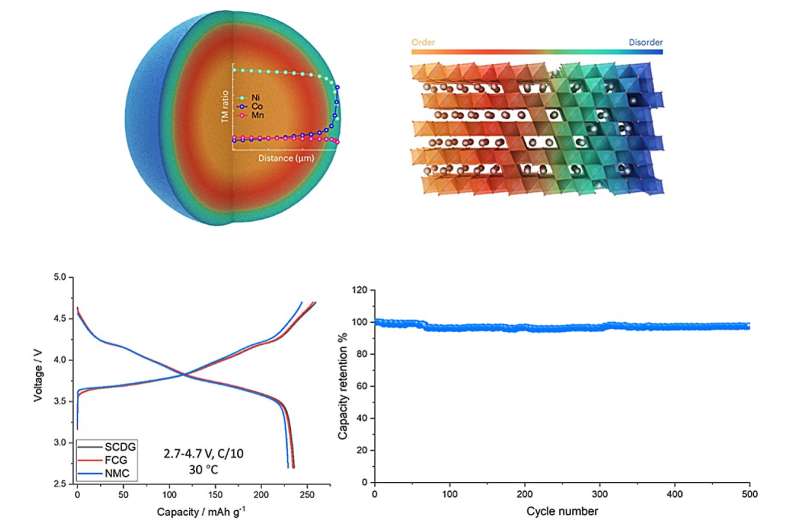NMC cathodes with a unique dual-gradient design, able to enhance the efficiency, lifespan, and sustainability of lithium-ion batteries and not only tackles the limitations of traditional cathodes but also paves the way for next-generation electric vehicles and energy storage solutions.

In the ongoing quest to develop more efficient and durable battery technologies, researchers have focused heavily on enhancing cathode materials. Traditional cathodes, while functional, often struggle with performance at high voltages and can degrade rapidly, leading to reduced battery life. A solution has emerged in the form of layered oxide cathodes, which possess a layered crystal structure that could revolutionize lithium-ion batteries by improving their efficiency and reducing both manufacturing costs and environmental impact. A team of scientists at Argonne National Laboratory has made significant strides in this area, designing ultra-stable NMC (Nickel-Manganese-Cobalt) cathodes, a specific type of layered oxide cathode. Their findings reveal that these new materials can maintain high performance in lithium-ion batteries without the typical rapid loss of capacity.
To advance NMC cathodes, they developed a series of concentration gradient NMC cathodes, optimizing the use of Ni, Mn, and Co. In this design, the nickel concentration decreases while manganese concentration increases from the center to the outer layer of each particle.This full-gradient design, patented by the team in 2012, leverages nickel’s high energy density and manganese’s stability, leading to a cathode that performs well even at high voltages, crucial for next-generation batteries. Importantly, this design has already attracted interest from battery manufacturers, highlighting its commercial potential. The research team also tackled the supply challenges associated with cobalt, a critical but limited resource. Their updated cathode design features reduced cobalt content, significantly lowering manufacturing costs and environmental impact.
The new dual-gradient cathodes not only address the capacity and safety trade-offs seen in conventional designs but also enable operation at higher voltages (up to 4.7V) without compromising battery life. This innovation enhances cathode performance and opens up new avenues for battery material design. Looking ahead, the researchers plan to refine the dual-gradient design, further reducing cobalt and nickel usage while improving energy density. They also aim to integrate these cathodes into full battery systems for real-world testing, potentially paving the way for more sustainable and high-performing batteries for electric vehicles and other applications.







